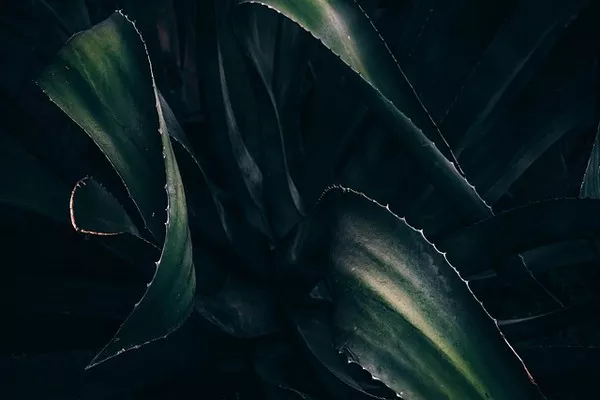Succulents have gained immense popularity in recent years, thanks to their unique beauty and easy-care nature. With a wide variety of shapes, colors, and sizes, succulents have become a favorite choice for both beginner and experienced plant enthusiasts. However, identifying the specific type of succulent you have can be challenging due to the vast array of species and hybrids available. In this comprehensive guide, we will help you identify your succulent, exploring key characteristics, growth habits, and tips to keep them thriving.
The Fascinating World of Succulents
Succulents belong to the plant family Crassulaceae, and they are known for their ability to store water in their fleshy leaves, stems, or roots. This water-storing adaptation enables them to thrive in arid and semi-arid regions, making them resilient houseplants when provided with proper care. Succulents encompass a diverse range of species, including cacti, Echeveria, Haworthia, and Aloe, among many others.
Identifying Your Succulent: The Basics
1. Leaf Shape and Size
One of the first steps in identifying your succulent is to observe the shape and size of its leaves. Succulents exhibit various leaf forms, ranging from thick and rounded to long and slender. For instance, Echeveria species typically have rosette-shaped leaves, while Aloe plants have long, pointed leaves. Note down any unique leaf features such as spines, warts, or variegation, as these can be essential clues.
2. Leaf Color and Texture
The color and texture of the leaves can also provide valuable insights into your succulent’s identity. Succulents come in an array of colors, including shades of green, blue, purple, red, and even variegated patterns. Some succulents have smooth, glossy leaves, while others may have fuzzy or waxy textures. These characteristics can vary significantly among different species.
3. Growth Habit
Observing the overall growth habit of your succulent can help narrow down its classification. Succulents can be categorized as rosette-forming, trailing, branching, or columnar. For instance, the popular String of Pearls (Senecio rowleyanus) is a trailing succulent with distinctive bead-like leaves, while the Snake Plant (Sansevieria) is known for its upright, sword-like foliage.
4. Flowering Patterns
Flowers are another essential factor in succulent identification. The type, color, and timing of blooms can be unique to specific species. For instance, Aeoniums often produce large, showy flower clusters, while Haworthias typically have small, tubular flowers in various colors. Take note of the flower’s appearance and season to help identify your succulent.
5. Growth Rate
The growth rate of your succulent can also provide valuable information. Some succulents are slow-growing, taking years to reach maturity, while others grow rapidly. Knowing the growth rate can help you manage your succulent’s care more effectively, as slower growers may require less frequent repotting and maintenance.
Utilizing Online Resources
Identifying your succulent can sometimes be challenging, especially if you’re new to the world of succulents. Fortunately, there are several online resources and communities dedicated to succulent enthusiasts that can assist in identification. Here are some helpful tips for using these resources effectively:
Succulent Identification Apps: Several smartphone apps allow you to take photos of your succulent and receive possible matches. Apps like “PlantSnap” and “PictureThis” can be incredibly useful for quick identification.
Online Succulent Identification Forums: Joining online forums or social media groups dedicated to succulents is an excellent way to seek help from experienced enthusiasts. You can post clear pictures of your succulent and ask for identification assistance.
Botanical Databases: Explore online botanical databases and plant identification websites. Resources like the “International Crassulaceae Network” provide detailed information on various succulent species, including photos and descriptions.
Books and Field Guides: Invest in a good succulent identification book or field guide to help you identify your plant. These resources often include detailed illustrations and information on a wide range of succulent species.
Common Succulent Species
To further assist you in identifying your succulent, let’s explore some common succulent species and their distinctive features:
Echeveria: Echeverias are known for their rosette-shaped leaves, which can vary from smooth to ruffled edges. They come in various colors, including shades of green, blue, pink, and purple.
Sedum: Sedums are often characterized by their trailing or spreading growth habit and succulent leaves. Some popular varieties include Sedum spectabile (showy stonecrop) and Sedum morganianum (Burro’s tail).
Aloe: Aloes typically have thick, lance-shaped leaves with toothed margins. They are known for their medicinal properties and striking, tubular flowers.
Haworthia: Haworthias are small, compact succulents with pointed leaves and distinctive white, translucent markings. They are perfect for indoor cultivation.
Cactus: Cacti are famous for their spines and can take various shapes, from tall columns to rounded globes. They often produce colorful, showy flowers.
Succulent Care Tips
Once you’ve identified your succulent, it’s essential to understand its specific care requirements. While succulents are generally low-maintenance, each species may have unique needs. Here are some general care tips:
Light: Most succulents thrive in bright, indirect sunlight. However, the specific light requirements may vary. Research your succulent’s light preferences to ensure it receives the right amount of light.
Watering: Succulents are susceptible to overwatering, so it’s crucial to let the soil dry out between waterings. Water sparingly, and use well-draining soil to prevent root rot.
Temperature and Humidity: Succulents prefer a stable temperature range and can be sensitive to extreme heat or cold. Provide adequate ventilation to prevent humidity buildup.
Potting and Soil: Choose pots with drainage holes to ensure excess water can escape. Use a well-draining succulent or cactus mix to promote healthy root growth.
Fertilization: Fertilize sparingly during the growing season (spring and summer) with a balanced, diluted succulent fertilizer.
Conclusion
Identifying your succulent can be a rewarding experience that deepens your appreciation for these unique and diverse plants. By paying attention to key characteristics, utilizing online resources, and understanding common succulent species, you can successfully determine the type of succulent you have. Armed with this knowledge, you can provide the best care for your succulent, ensuring it thrives and continues to grace your living space with its beauty for years to come.


